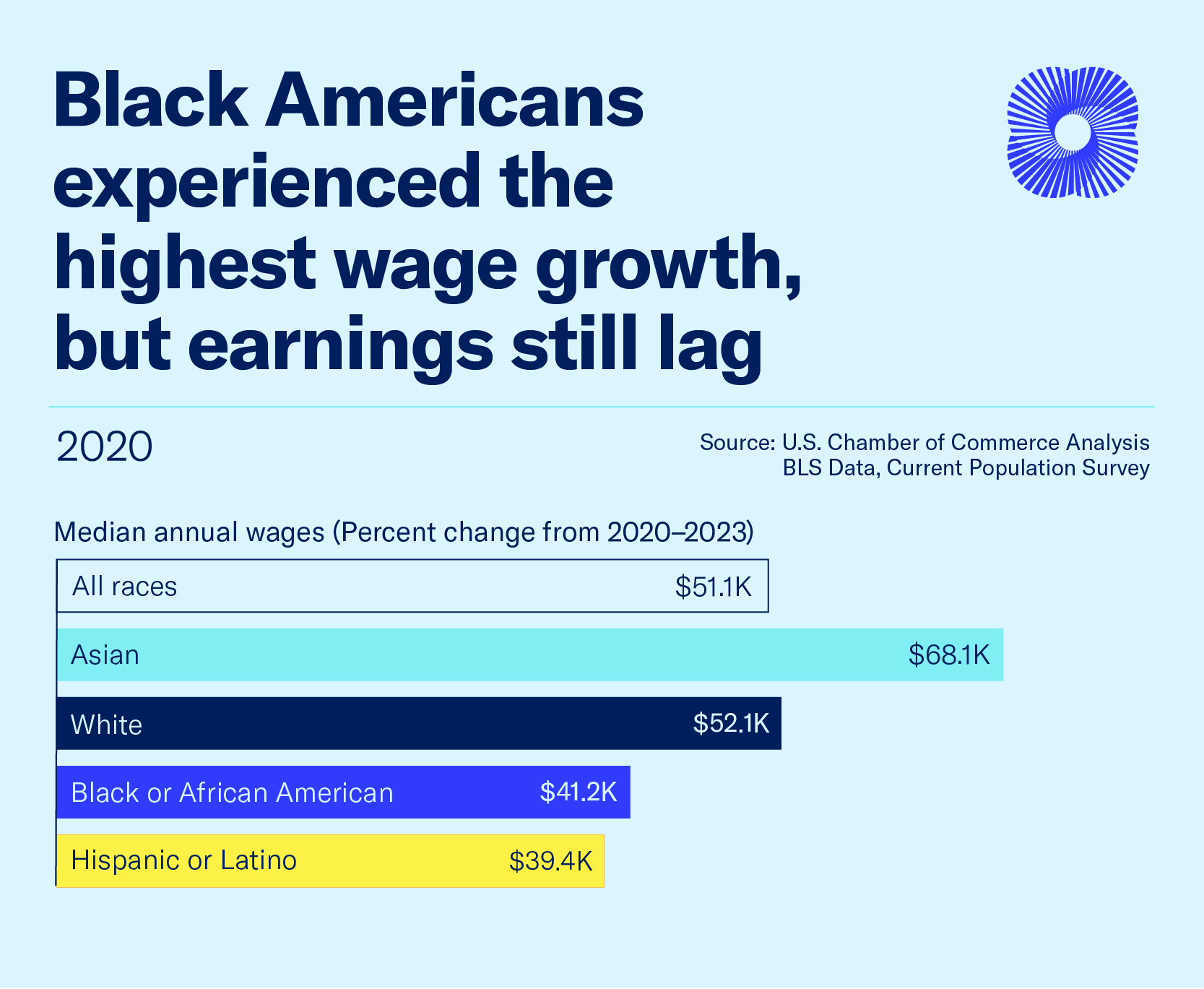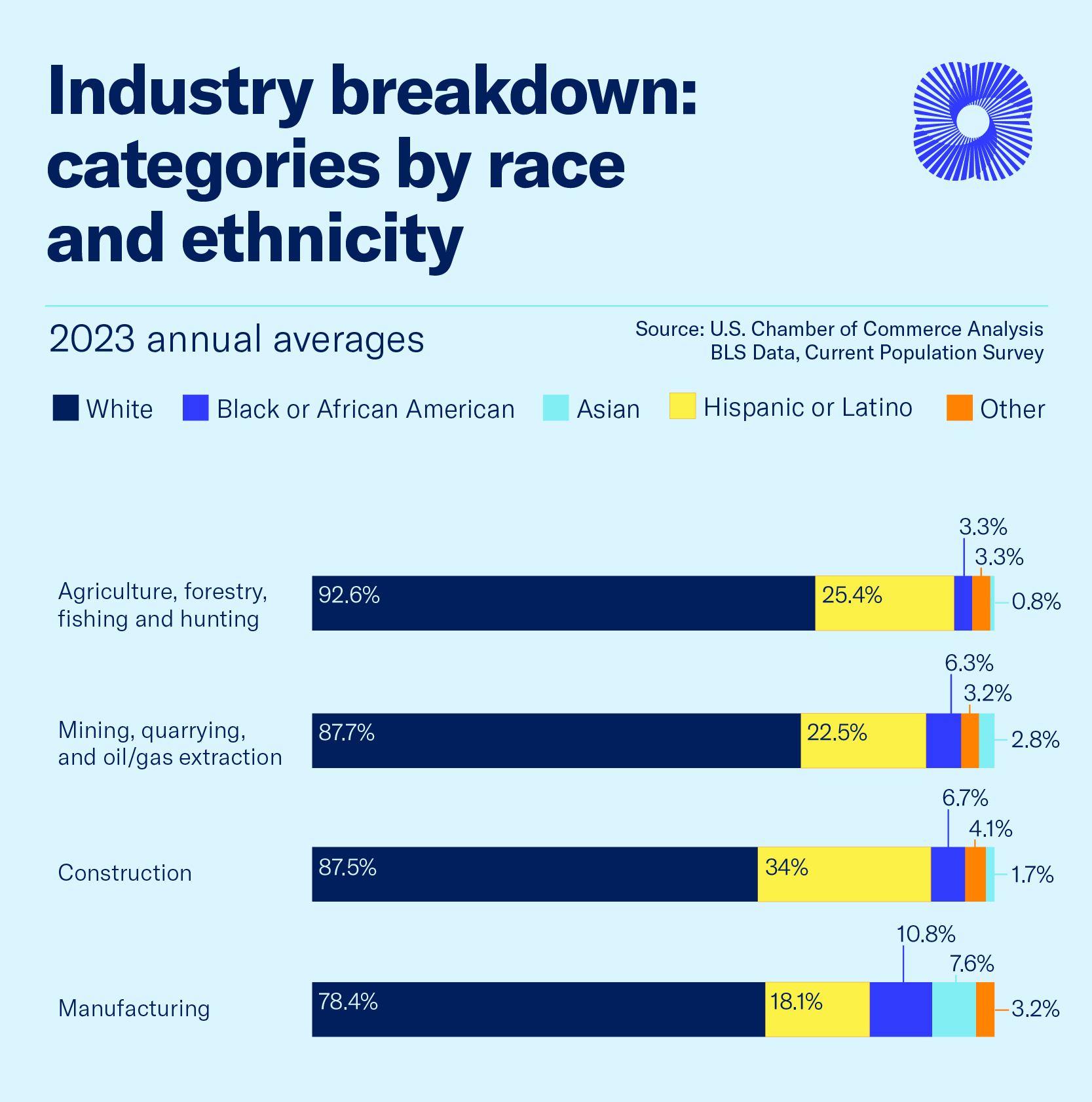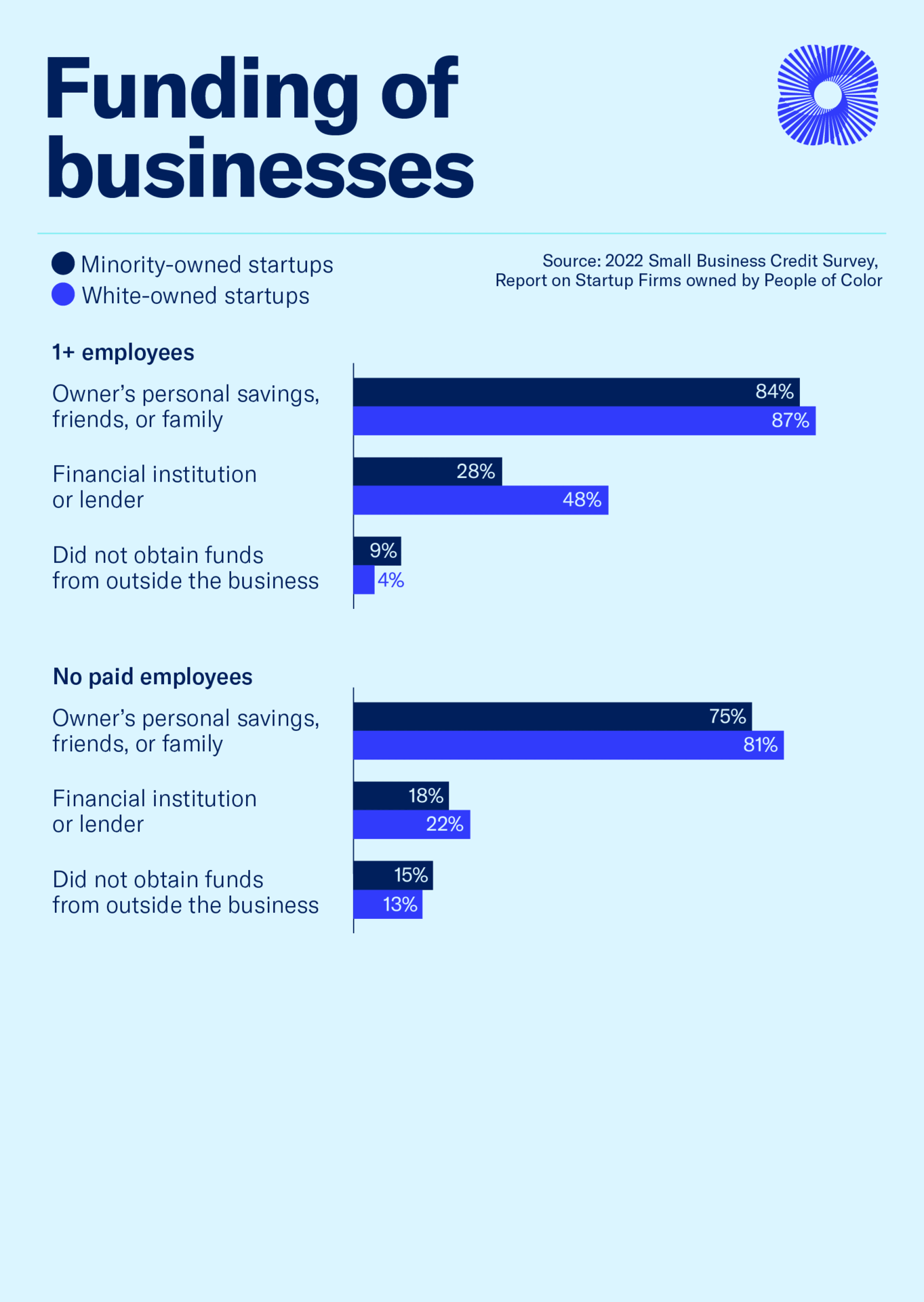Published
April 30, 2024
In 2020, the U.S. Chamber of Commerce launched the Equality of Opportunity Initiative, recognizing the need to tackle opportunity gaps that contribute to broader societal inequalities that hinder both individual and business success as well as economic growth. The findings below have informed our work as we continue to pursue targeted, data-driven, and sustainable solutions that will help deliver the American promise of equal opportunity to all.
Employment

For most Americans, employment is a crucial factor in determining family income and plays a pivotal role in a family's ability to accumulate wealth over generations. The significance of employment extends beyond individual households, impacting entire communities.
Unemployment Rates in January 2024
The average unemployment rate in January 2024 was 3.7%.
-
5.3%
Black
-
3.4%
White
-
5.0%
Hispanic or Latino
-
2.9%
Asian
Since data became available on unemployment five decades ago, the rate of unemployment among Black Americans has persistently remained double that among White Americans. However, in 2023, the gap began to narrow.

Five percent of the workforce work more than one job. Among those, Black Americans are the most prevalent, with Black women having the highest rate at 6.6%. One contributing factor to this disparity is the overrepresentation of Black Americans in lower-paying occupations and industries, as detailed in the occupation and industry sections below.

From 2020 to 2023, wage growth for all Americans has grown 12%. Black Americans experienced the highest wage growth at 14% over this time period. However, the earnings remained in the lower sector.
Workforce breakdown by race and ethnicity (2023)
-
12.8%
Black
-
76.5%
White
-
18.8%
Hispanic or Latino
-
6.9%
Asian
The breakdown of the workforce above is largely consistent with the demographic breakdown of the U.S. population by race, which is approximately 13.6% Black, 75.5% White, 19.1% Hispanic or Latino, and 6.3% Asian.

In 2023, the transportation and utilities, wholesale and retail trade, and the leisure and hospitality industries were the most diverse across all races and ethnicities. Black Americans exhibited the highest workforce representation in the transportation and public administration industries, accounting for nearly a fifth of the workforce. Black Americans hold a low percentage of employment in the agriculture, mining, and construction industries.

There continues to be a strong pattern of racial disparities of employment concentrations across occupations. Black Americans are more likely to be concentrated in lower-paying occupations with limited access to benefits such as health insurance, retirement plans, and paid sick leave and face substantial barriers to accumulating wealth over time. The persistent racial disparities in employment concentrations across occupations not only affect current income levels but also have significant implications for long-term wealth building and financial stability.
Entrepreneurship
Entrepreneurship serves as a powerful catalyst for economic mobility, offering individuals from diverse backgrounds opportunities to create wealth and improve their socioeconomic status. By starting and growing their businesses, entrepreneurs not only generate income for themselves but also contribute to the growth of their families, communities, and broader economies. This accumulation of wealth not only benefits the entrepreneur personally but also has a ripple effect, as it provides resources for reinvestment, job creation, and community development.

Within the domain of employer firms (defined as having more than one employee), Black or African American entrepreneurs represent 8% of ownership, a figure that well falls below their proportion in the U.S. population, which stands at nearly 14%. Within the realm of nonemployer firms (defined as having no employees), Black entrepreneurs account for 13% of startup firm ownership, a proportion almost in line with the U.S. population.

Delving into employer businesses specifically, there are 1.2 million women-owned businesses, and 1.09 million are minority-owned. Among them, 140,000 are owned by Black Americans.

The average employee count for new firms (businesses less than two years old) is six employees. However, this figure is significantly lower for Black-owned businesses, standing at only 3.8 employees, as depicted in the graphic above. This trend persists even as the business matures, with Black-owned businesses maintaining lower average employee numbers compared to the overall average of 60 employees for businesses older than 20 years.
When examining the two-year survival rate for young employer establishments—defined as firms aged 2 to 3 years surviving to at least 4 to 5 years old—the average stood at 79% in 2019. Among demographic groups, Black-owned businesses showed the lowest survival rate among these establishments, at 73%.

The graphic above illustrates top U.S. industries – including utilities, wholesale trade, and manufacturing – with revenues in the tens of millions of dollars. In contrast, Black-owned businesses predominantly operate in lower revenue sectors, such as healthcare, administrative support and waste management, and professional, scientific, and technical fields, where revenues typically fall in the lower millions.
In 2020, Black businesses generated average revenues of $1,031,000, compared to $6,485,000 for non-Black businesses. If Black businesses increased their average revenue to match that of non-Black businesses, it would result in a total revenue increase of approximately $676 billion for Black businesses.

Access to capital can be extremely helpful for startups to sustain their operations and pursue growth opportunities. While most startups rely on personal funding sources, the graphics above demonstrate that many firms, particularly employer firms, seek funding from financial institutions or lenders.
In 2022, minority-owned startups were significantly less likely to acquire funding through loans, lines of credit, and merchant cash advances than white-owned startups. Minority-owned startups with employees were less than half as likely as their white-owned counterparts to be fully approved on applications and nearly twice as likely to face denial. However, this gap between lending to white and minority applicants only looks at racial differences and doesn’t account for other factors used in making lending decisions.
Conclusion
While there are signs of progress in employment and entrepreneurship for Black Americans, such as narrowing unemployment gaps and modest wage growth, significant challenges remain. Addressing these opportunity gaps will ensure opportunity for all Americans, regardless of race or ethnicity.
The U.S. Chamber of Commerce has made real progress in convening the business community to identify data-driven solutions to the inequalities that exist in society and is committed to continuing to put the collective muscle of American business behind advancing solutions that deliver equal opportunity to all. We will continue to identify and advance other solutions to help close the equality of opportunity gaps.
About the authors

Makinizi Hoover
Makinizi Hoover is the Senior Manager of Strategic Advocacy at the U.S. Chamber of Commerce. Her work includes the development and project management of comprehensive data centers that serve as a valuable resource for policymakers, businesses, and the public.

Isabella Lucy
Isabella has created stunning visualizations tackling pressing issues like the worker shortage, the benefits of hiring veterans, the lifespan of small businesses, and the future of work.





